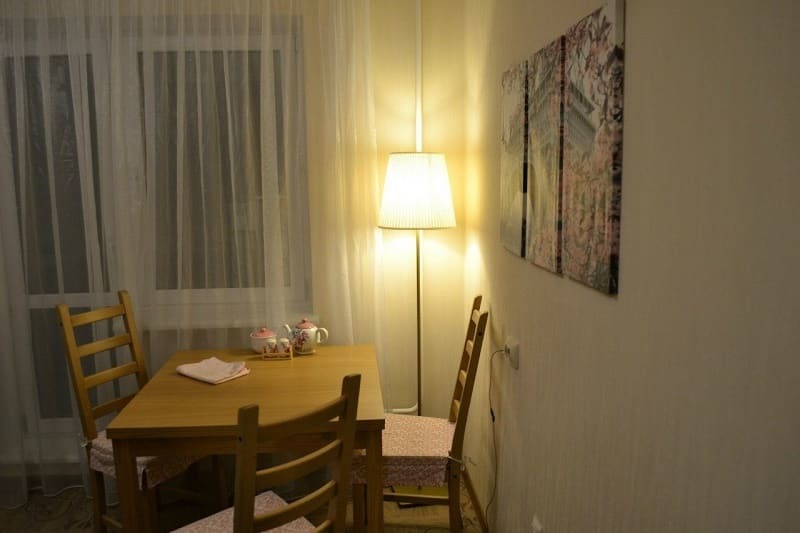In modern apartments, it is rather difficult to control the light with one switch, especially if the lamps are divided into large groups. To solve such problems, remote lighting control is used, which works through the use of radio waves or infrared radiation.
Types of control systems
To control the lighting can be used various devices that operate by receiving pulses from the remote control. They can be divided into:
- Infrared
- Radio waves;
- Impulse.
These wireless technologies will help you control indoor and outdoor lighting from one specific point. The panel is connected to the wires of the fixtures and provides a smooth switching between light sources.

To control outdoor lighting (parking lots, city squares, warehouses), it is most convenient to use infrared systems. The IR remote control for lamps is a prototype of a standard remote control for television equipment. They are affordable and easy to use, but at the same time they are not without drawbacks. In particular, IR lighting control systems will only work if the light sources are within sight (up to 10 meters from the console, depending on the power of the signal transmitter). This is not always convenient, in particular, if lighting control is required in another part of the yard or warehouse. Therefore, now many companies produce remote control for equipment that significantly enhances the momentum, giving it additional power.

After this module receives an infrared signal, it converts it into a radio wave and redirects it to the next controller. Such dispatching wireless control of indoor and street lighting helps to control the operation of lamps from two places or more.
Infrared walk-through switches have been widely used in the control of corridors and landings. Often the circuit diagram of devices includes a motion sensor based on the principle of recognizing the heat of the human body. Such intelligent control allows you to turn off the light if there is no one in the room or passage and immediately light it when a person appears there. Sometimes they are also complemented by ultrasonic indicators that help increase work efficiency.

Radio Lighting Control It is used quite often due to its wide scope. Such a system consists of a signal receiver (aka controller) and a remote control for automatic lighting control. The remote sends a pulse to the receiver’s sensor, with which the device turns off or, conversely, turns on the light. The advantage of the technology is a wide range of actions, it is possible to control switches from different rooms, but at the same time, they have a rather high cost. They have great power, so they can be operated in large spaces.
Most often, various lighting controls impulse relay. This device can be mounted in a panel or directly in the switch. This is ideal for a large residential building, where there are many stairs or vestibules, because many modern models are available with a timer.

The timer provides control of the time that the lamp shines. For example, for the entrance you need the light bulb to glow for about 8 hours in the evening, but often they just forget to turn it off, as a result - too much energy is consumed. A starter configured for a specific interval of operation will automatically break the circuit.

Any lighting control will help provide a box like YaUO, which is used for manual and remote (from the remote control, from a computer or even a phone) control over electric lighting. Such a prefabricated contactor can be used in the apartment, but then it will be necessary to allocate space for the installation of the box. What are the technical characteristics of home nuclear weapons:
| Working current | Three phase, variable |
| Maximum current, A | 200 |
| Frequency, (at 200 A), Hz | 50 |
| Voltage kW | 380 |
| The maximum level of illumination, Lx | 2000 |
| Minimum, lx | 5 |
The main advantage of using a ready-made collection box is the ability to control LED, fluorescent and other types of lamps. It is also easy to install with your own hands.

You can buy such a shield or ASUNO-GSM, AVR or PIC unit for controlling street or house lighting in special electrical stores. The price depends on the type of system and its capabilities, in principle, radio-wave devices are more expensive than infrared. Before buying, it is advisable to develop a project for the location of groups of lamps, so it will be possible to choose a scheme for your own needs.

Advantages of Wireless Control
Initially, touch control of lighting, for example, DALI, was used only with the concept of “Smart Home”, but now even in a rather mediocre apartment you can find a photo relay.
Automated lighting makes life easier for its owners. A 1-, 2- or even 5-channel shield will help to control the lighting of the courtyard, corridors, bedroom hall and other rooms from one point. Advantages of the system:
- Radio control increases the safety of the room. Lighting can be controlled not only from a personal stationary computer, but also using a telephone or even setting a timer. This will help protect your home from intrusion if you want to leave (offenders will not enter the house with the lights on);
- Saving consumables. A large amount of cable is required to pull the wires to the switches. In addition, its periodic will have to be changed in any case. Electronic control uses the minimum number of wires;
- You are not affected by power outages. A touch-sensitive cabinet and an automatic machine with switches are connected by radio waves; home and street lighting are controlled without connecting to a local circuit;
- Such an electrical control circuit is more convenient if you need to control lighting at two, three or more points. It can also be paired with a dimmer, providing in accordance with the location of these points a softer or, conversely, bright light.


